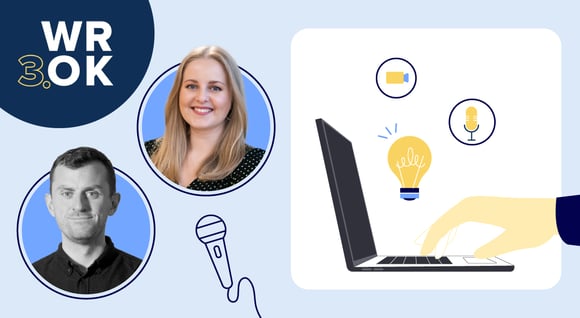Do you remember how you learned new skills before the pandemic? Maybe it happened in a classroom with a bunch of other like-minded people, where you got elaborations from the instructor and discussed a topic with everyone else in the room?
The pandemic made this scenario almost impossible, and a lot of companies had to digitize their training to make sure that their employees still learned something new, but for some - this way of learning was completely new.
Now, when we are slowly getting back to normal, some are going back to that classroom too. On the other hand, others keep the learnings from the digital way of learning and implement it in their L&D programs.
However, the pandemic also made the hybrid workplace - in some cases - the new normal, and how is it even possible to create learning options that embrace all kinds of employees - both in-office and those working remotely?
This was one of the top questions in the podcast WORK 3.0 in the episode about how we learn in a post-pandemic hybrid world.
The Trends Right Now
So, what is the most trending type of learning content right now post-pandemic?
"What I see when it comes to trends today is that we need to give our employees the opportunities to learn in the flow of work, so when they actually have the time to do it. (...) So, if they have tons of meetings and a lot of things to go to, then we need to give them digital training they can do whenever they have time to do so."
"But also giving them some tools, so they can be even more aware of how to plan their time. Working from home as well as from the office. (...) A good learning culture is important as well as good hybrid workplace culture," Ann-Katrine Schepler Holmberg, VP of Customer Adoption in Learningbank says in the podcast.
Furthermore, Christian Haahr Sigsgaard, Global Director of Learning & Development at Valtech says that L&D often tackles the part about providing content for employees the wrong way:
"It's also about making the formal learning activities accessible in the flow of work. In the last 10 years in our L&D industry there has been a huge focus on content and content consumption, and not being able to produce enough content, and because of that we needed to curate the content - and still - we have engagement issues from our end-users."
"That's because we look at it from the wrong site, because we can, of course, find content that is relevant to your role, but if it's not relevant to your tasks, and if it's not what you do on a day-to-day basis, then people will not engage with it," Christian Haahr Sigsgaard says.
What NOT to Do and What About the Social Aspect of Learning?
You can listen to the full episode in your favorite podcast player right here, where you also will gain insights about:
- What corporate learning typically looked like before the pandemic
- What kinds of learning content and ways of giving learning failed during and post-pandemic
- Tips to get the social aspect into a digital learning context
- How to create relevant learning for the employees
- Tips for time management for the employees
- Whether it's possible to create learning that is relevant to both employees working remote and those working in-office

